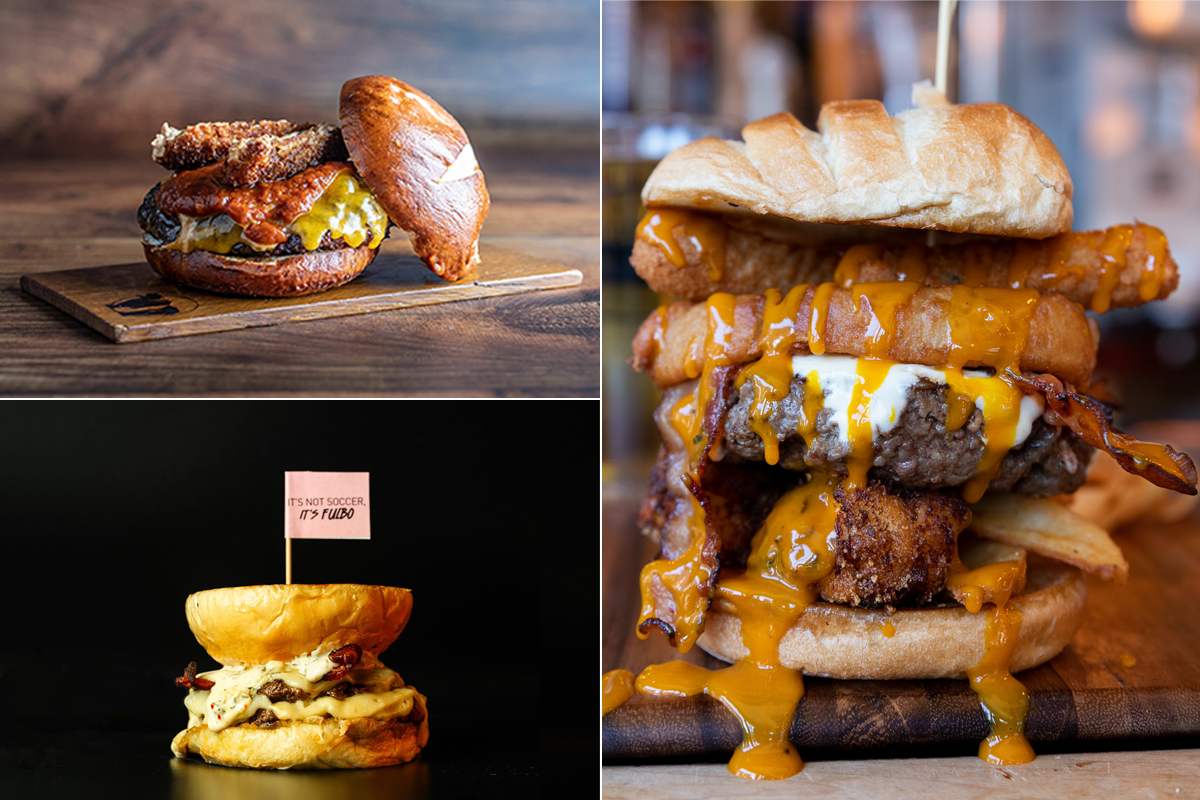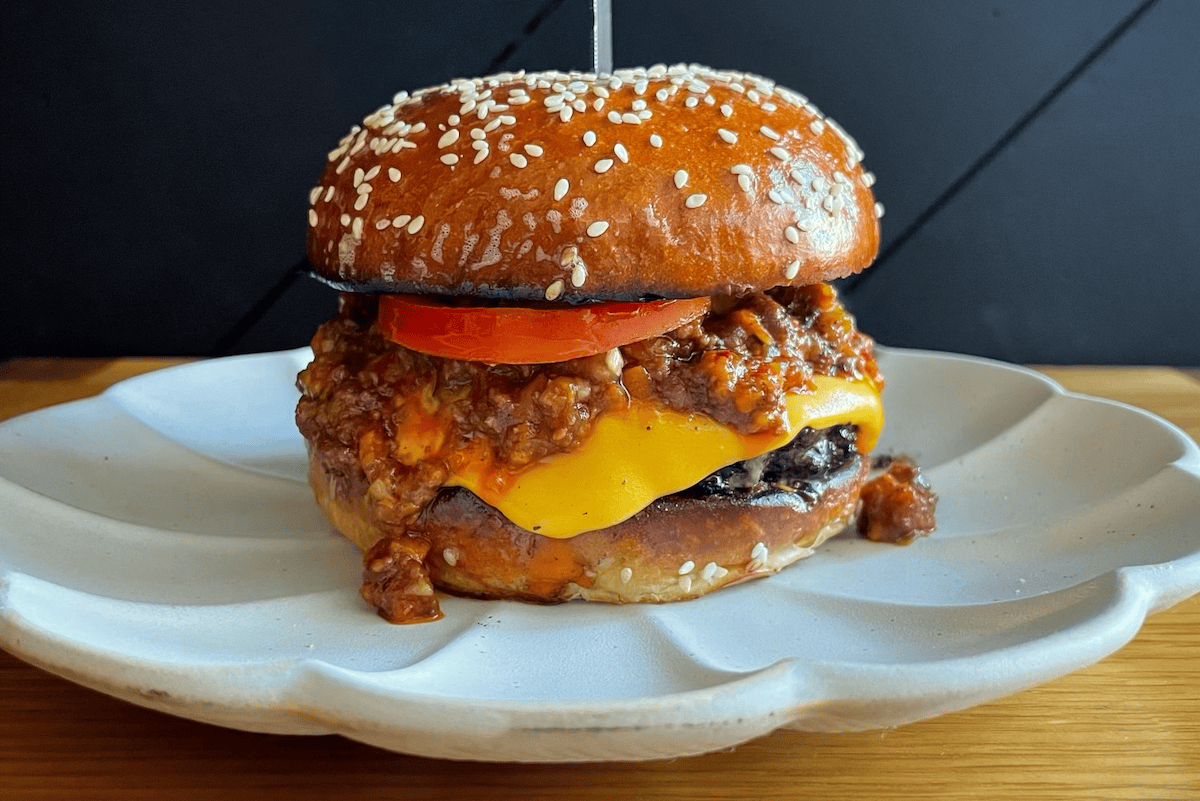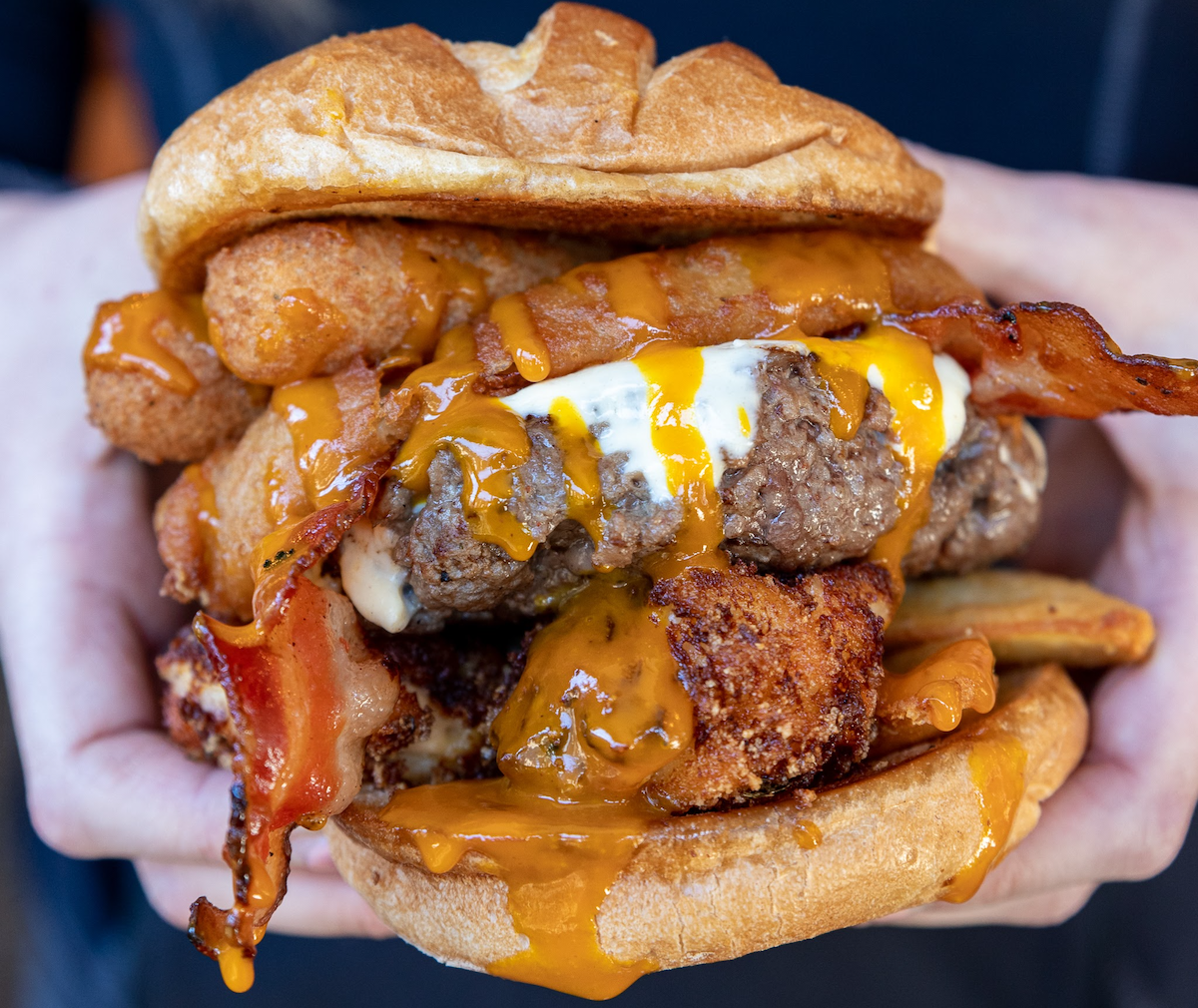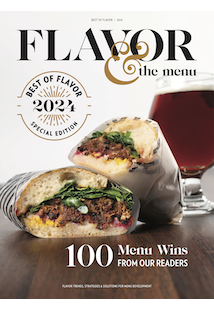
Over-the-Top, Fully Loaded Burgers
Exploring the appeal of layers upon layers of decadent filling
Over-the-Top, Fully Loaded Burgers
Exploring the appeal of layers upon layers of decadent filling
By Leigh Kunkel
August 6, 2024
By Leigh Kunkel
August 6, 2024
Once the province of fast-food spots and greasy spoons, burgers have made their way to center stage everywhere from national chains to Michelin-starred kitchens. And perhaps as a gentle pushback against the clean eating trend of the last few years, many chefs are taking their burgers over the top in inspiring––and deliciously messy––ways.
From surprising sauces to piled-high toppings to creative cheeses, there are countless ways to shake up the humble hamburger. Here are a few of our favorites.
Go Big, Go Global

Japanese chain Mos Burger is both the inspiration behind and the namesake of Ototo’s best-selling burger, which infuses Korean spices into the sloppy Joe-like build.
Arrive at Los Angeles’ Ototo between 5 and 7 p.m., and you’ll find a special happy hour menu item: the Ode to Mos Burger. This popular dish––a beef patty topped with Japanese-style chili, American cheese, fresh tomato and a special sauce featuring Kewpie mayo, yellow mustard, ketchup and yuzu juice––was inspired by Chef and Owner Charles Namba’s visit to Mos Burger, a popular chain in Japan.
“I learned that Mos Burger founder Satoshi Sakurada had fallen in love with Original Tommy’s chili cheeseburger when he was in the United States. He created a beanless chili using a tomato base with the addition of diced carrots to make it a bit sweeter, almost like a sloppy Joe,” Namba explains. “I created one that is an homage to that, with a similar chili and the addition of Korean spices for some depth.”
The melange of flavors has proven a popular one with guests––the Ode to Mos has been a best-seller since it was introduced. Namba thinks that might have something to do with the over-the-top nature of the burger. “Most of our menu items at OTOTO require chopsticks, so this dish is one of the few exceptions where guests really need to roll up their sleeves and grab a lot of napkins,” he says. “It comes with a steak knife pierced through it so people can cut it but it is a messy burger, which I think creates a really satisfying dining experience.”
East Asia isn’t the only place chefs are turning to for ingredients and ideas. At The Loyalist, the more casual sister restaurant to Michelin Three-Starred Smyth in Chicago, the decadent French Smash burger comes topped with escargot butter, cornichons and Mornay sauce. In California’s Silicon Valley, micro-chain Zareen’s has a selection of Pakistani- and Indian-influenced burgers featuring chutneys, pickled veggies and even smashed samosas. And at La Birra, a Florida burger chain, the Messy burger––inspired by Argentine soccer star Lionel Messi––comes with Argentinian-style cheese, “mayochurri” and an upside-down bun.
And just because a burger is heavily laden with decadent fillings doesn’t mean said burger must be a carnivorous affair. Vegetarian and even vegan variations can also be stuffed with layer upon layer of rich fillings. Among the many staples on the menu at Atlanta-based chain Slutty Vegan, the Dancehall Queen is a dramatic favorite with Caribbean vibes. The burger features a Beyond Meat patty smothered with sweet jerk plantains and vegan cheese.
Add in an Appetizer
 Photo Credit: Christina Orso
Photo Credit: Christina Orso Boston Burger Company loads mac and cheese bites, bacon, fries, onion rings and mozzarella into its 420 burger, with a finishing drizzle of Carolina-style barbecue sauce.
Another way to load up a burger? Combine it with the appetizer menu like Boston Burger Company does with its 420 burger, which co-owner Paul Malvone calls “a dream come true when you have the munchies.” The 80/20 beef blend patty is barely visible under a tower of fried mac and cheese bites, bacon, fries, onion rings and mozzarella strips, topped with a drizzle of Carolina-style barbecue sauce.
The name of the burger might make it pretty obvious where the three founders got their inspiration from, but that doesn’t mean they took the recipe development any less seriously. “Each component was thought-out. The hardest thing was getting it all in between the buns. Once we started stacking, it went up pretty quickly,” Malvone says. “This burger has sweet, savory, salty and creamy notes in each bite.” The finishing drizzle of barbecue sauce was the perfect addition because, as he explains, it could have worked as a flavorful dip for each filling in a deconstructed format.
TGI Fridays did something similar in 2020 with its app-inspired Loaded Burger menu. The line-up included a Guinness Pub Burger topped with cheesy potato skins and a Philly Cheesesteak Burger, which sported a Philly cheesesteak egg roll in addition to the usual trappings. At Kuma’s Corner in Chicago, the Brujeria spices up the burger-appetizer combo with housemade hot sauce and a jalapeño popper beneath the bun. On the plant-based front, Colorado fast casual Meta Burger’s the Flatiron stacks grilled Brussels sprouts atop a plant-based patty with Gouda-style “cheese,” mushrooms and crispy onions.
For chefs and menu developers looking to put their own spin on the loaded hamburger, Ototo’s Namba advises focusing on the story behind the burger—not how high the ingredients can be piled. “I think any play on a classic works better if there is a story, because it comes from a time, place or experience of the person who created it that can be shared with others,” he says. “Adding a bunch of stuff to something doesn’t necessarily make it good, but if there is a reason why additional ingredients are added, it can all come together harmoniously to create something new and fresh.”
About the Author
![]() Leigh Kunkel is a freelance journalist with more than a decade of restaurant industry experience as a server, bartender and sommelier. She has written about restaurant operations for B2B publications, as well as foodservice brands, including Beam Suntory and Dawn Foods. She specializes in covering flavor, ingredient and cuisine trends. Leigh has also covered the food and beverage world for a wide range of consumer outlets such as The New York Times, Eater and Vinepair.
Leigh Kunkel is a freelance journalist with more than a decade of restaurant industry experience as a server, bartender and sommelier. She has written about restaurant operations for B2B publications, as well as foodservice brands, including Beam Suntory and Dawn Foods. She specializes in covering flavor, ingredient and cuisine trends. Leigh has also covered the food and beverage world for a wide range of consumer outlets such as The New York Times, Eater and Vinepair.







